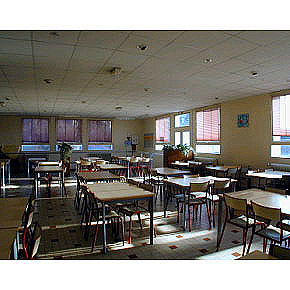Introduction
Contrarily to heating, cooling energy consumption is increasing rapidly in non-residential buildings. Main factors contributing to this trend are: a) principal use of buildings is at daytime when higher ambient temperature occurs, b) buildings are more and more densely populated with increasing demand for comfort, c) increased utilisation of electric equipment, lighting and mechanical ventilation especially with deep building geometry, d) increased glazing surface and solar gains. To reduce cooling energy consumption in both new buildings and retrofitting schemes, design should target:
- first to avoid overheating by solar control, use of energy efficient electric equipment, maximise daylighting and use energy efficient lighting, improve thermal storage, and,
- second apply natural cooling techniques to remove overheated air (natural / hybrid ventilation), and/or if applicable supply cold (ground cooling, evaporative cooling).

|

  
|